ARFF Daily News
Published on:
Friday the 21st of March, 2025
Here are the stories to close out the week...
Of note, the Canadian TSB has released a lengthy preliminary report on the Endeavor Air incident at YYZ on February 17th, 2025. It includes information and pictures of what ARFF crews faced on scene.
*** Preliminary Report *** - N932XJ CRJ-900LR Toronto Canada 17 FEB 2025
Summary of the occurrence:
On 17 February 2025, the MHI RJ Aviation Group. CL-600-2D24 aircraft (CRJ-900LR) (registration N932XJ, serial number 15194) was operating as Endeavor Air flight EDV4819 from Minneapolis-Saint Paul International/Wold-Chamberlain Airport (KMSP), Minnesota, United States, to Toronto/Lester B. Pearson International Airport (CYYZ), Ontario. During the landing on Runway 23, the aircraft impacted the runway, the right wing detached, and a fire ensued. The aircraft overturned and slid down the runway inverted, coming to rest near the intersection of Runway 23 and Runway 15L. Aircraft rescue and fire fighting responded, and all passengers and crew evacuated.
History of the flight:
At 1247 on 17 February 2025, the MHI RJ Aviation Group. CL-600-2D24 aircraft (CRJ 900LR) operated by Endeavor Air (doing business as Delta Connection) departed Minneapolis-St. Paul International/Wold-Chamberlain Airport (KMSP), Minnesota, United States, on flight EDV4819, an instrument flight rules flight to Toronto/Lester B. Pearson International Airport (CYYZ), Ontario, with 2 flight crew members, 2 cabin crew members, and 76 passengers on board. The captain was seated in the left seat and was the pilot monitoring for the flight. The first officer was seated in the right seat and was the pilot flying (PF).
The flight proceeded uneventfully, and the crew received clearance for the instrument landing system approach to Runway 23 at CYYZ. The landing reference speed (VREF) for the approach was 139 knots. According to Endeavor Air’s CRJ700/900 Series Company Flight Manual, “Final approach is flown at VREF+5 knots. When operating in gusty wind conditions, increase VREF by 1/2 of the gust factor not to exceed 10 KIAS [knots indicated airspeed] (top of the bug).” On the occurrence flight, the flight crew set the speed bug to VREF+5 knots, or 144 knots. Given the reported wind gusts, the approach was flown at 149 knots.
At 1412:01, the aircraft descended through 500 feet above ground level (AGL). The aircraft’s indicated airspeed was 150 knots, its ground speed was 121 knots, and the engine thrust was indicating approximately 64% N1. The rate of descent was 720 fpm, and the localizer and glide slope were centred. Five seconds later, the PF disconnected the autopilot.
At 1412:26, while the aircraft was descending through 175 feet AGL, its indicated airspeed was 144 knots, with a ground speed of 121 knots, and a rate of descent of 672 fpm. The thrust remained at approximately 64% N1.
At 1412:30, while the aircraft was descending through 153 feet AGL, its indicated airspeed increased to 154 knots whereas the ground speed did not change appreciably, consistent with a performance-increasing wind gust. The PF pulled back the thrust levers, and as a result, over the following 5 seconds, N1 decreased from 64% to approximately 43%, where it remained until touchdown. The airspeed began to decrease.
At 1412:40 (3.6 seconds before touchdown), when the aircraft was at a height of 50 feet AGL, the indicated airspeed was 145 knots, and the ground speed was 112 knots. The rate of descent had increased to 1114 fpm. The enhanced ground proximity warning system (EGPWS) aural alert “fifty” sounded to indicate the aircraft was at 50 feet AGL, which is a standard callout.
One second later (2.6 seconds before touchdown), the EGPWS alert “sink rate” sounded, indicating a high rate of descent. The aircraft’s indicated airspeed was 136 knots, its ground speed was 111 knots, and the rate of descent had remained at about 1100 fpm. The bank angle increased to a 4.7° right bank. The engine thrust was steady at approximately 43% N1.
At 1412:42 (1.6 seconds before touchdown), the aircraft’s indicated airspeed was 136 knots, and its ground speed was 111 knots. The aircraft was slightly below the glide slope, but on the visual segment of the approach and tracking the runway centreline. The rate of descent had increased to 1072 fpm, and the bank angle was 5.9° to the right.
Less than 1 second before touchdown, the aircraft’s indicated airspeed was 134 knots, and its ground speed was 111 knots. The bank angle was 7.1° to the right, and the pitch attitude was 1° nose up. The rate of descent was recorded as 1110 fpm.
At 1412:43.6, the right main landing gear (MLG) contacted the runway. The aircraft was in a 7.5° bank to the right with 1° of nose-up pitch and 3g vertical acceleration, at a rate of descent of approximately 1098 fpm (18.3 fps).
At touchdown, the following occurred: the side-stay that is attached to the right MLG fractured, the landing gear folded into the retracted position, the wing root fractured between the fuselage and the landing gear, and the wing detached from the fuselage, releasing a cloud of jet fuel, which caught fire. The exact sequence of these events is still to be determined by further examination of the fracture surfaces.
The aircraft then began to slide along the runway. The fuselage slid down Runway 23, rolling to the right until it became inverted. A large portion of the tail, including most of the vertical stabilizer and the entire horizontal stabilizer, became detached during the roll.
The aircraft went off the right side of the runway into the snow-covered grass area and came to a rest on Runway 15L, near the intersection with Runway 23, about 75 feet beyond the right edge of Runway 23. The right wing, including the right MLG, became fully detached from the aircraft and slid approximately 215 feet further along Runway 23.
Once the aircraft came to a stop, an evacuation began. All occupants evacuated the aircraft. At the time of writing this preliminary report, it has been confirmed that 21 of the 80 occupants were injured; 2 of those occupants were reported to have serious injuries.
Personnel information:
The captain has worked for Endeavor Air since October 2007. He holds an airline transport pilot certificate issued by the U.S. Federal Aviation Administration (FAA). He is employed as a flight crew member and a simulator instructor. At the time of the occurrence, he had accumulated about 3570 hours total flight time, including 764 hours on the aircraft type. On the day of the occurrence, the captain began his day at KMSP, and the occurrence flight was his 1st flight of day and his 1st flight in 7 days. In the previous 7 days, the captain had worked 3 days as an instructor. He had flown 3.5 hours in the previous 30 days.
The first officer has worked for Endeavor Air since January 2024. She holds an airline transport pilot certificate issued by the FAA. At the time of the occurrence, she had accumulated 1422.3 hours total flight time, including 418.7 hours on the aircraft type. The first officer was on day 5 of a 5-day work cycle. On the day of the occurrence, she had begun the day in Cleveland, Ohio, United States, with a flight that departed for KMSP at 0819. Upon arrival at KMSP, the first officer had 1 hour and 48 minutes until her next flight. Over the previous 30 days, she had conducted 3 round-trip flights into and out of CYYZ, not including the occurrence flight. She had flown 56.3 hours in the previous 30 days.
The flight attendant seated in the forward section of the aircraft had 3 years of experience, all of them with Endeavor Air.
The flight attendant in the rear section had 11 years of experience, including 5 years with Endeavor Air.
Aircraft information:
The aircraft was a CL-600-2D24 (Regional Jet Series 900) manufactured by Bombardier Inc. in 2008 and registered to Delta Air Lines, Inc. on 31 December 2009. It was issued a transport category airworthiness certificate. It was configured with 2 flight crew seats, 1 cockpit observer seat, 3 flight attendant seats, and 76 passenger seats.
At the time of the occurrence, the aircraft was being operated within its allowable weight-and-balance limitations. The occurrence landing weight was approximately 73 000 pounds, and there was about 6000 pounds of fuel remaining at the time of landing.
Total airframe time 35,335 hours
Weather:
The aerodrome routine meteorological report for CYYZ issued at 1400 indicated the following:
Winds from 270° true (T) at 28 knots, gusting to 35 knots
Visibility 6 statute miles (SM) in blowing snow
Runway visual range for Runway 24L variable between 3000 feet and more than 6000 feet with an upward trend
Broken ceiling at 3400 feet AGL
Temperature −9 °C and dew point −14 °C
Altimeter setting 29.93 inches of mercury
Remarks indicated cumulus clouds at 6 oktas
Following the occurrence, a special aerodrome routine meteorological report for CYYZ issued at 1432 indicated the following:
Winds from 270°T at 20 knots, gusting to 32 knots
Visibility 6 SM in blowing snow
Runway visual range for Runway 24L variable between 2600 feet and more than 6000 feet with a downward trend
Broken ceiling at 3000 feet AGL
Temperature −8 °C and dew point −13 °C
Altimeter setting 29.94 inches of mercury
Remarks indicated cumulus clouds at 5 oktas
The aerodrome forecast for CYYZ issued at 1240 and valid from 1300 on 17 February 2025 until 1900 on 18 February 2025 indicated the following:
Winds from 270°T at 25 knots, gusting to 35 knots
Visibility 3 SM in light snow showers and blowing snow
Broken ceiling at 3000 feet AGL
Between 1300 and 1600, a temporary (TEMPO) condition of 6 SM visibility due to blowing snow
Between 1300 and 1600, a 40% probability (PROB40) of 1½ SM visibility due to light snow showers and blowing snow
The runway had recently been plowed to a width of 160 feet; the full runway width is 200 feet.
Company information
Endeavor Air is a wholly owned subsidiary of Delta Air Lines, Inc. headquartered in Minneapolis, Minnesota, United States. It has hub operations in Atlanta (Georgia), Cincinnati (Ohio), Detroit (Michigan), Minneapolis, New York (New York), and Raleigh-Durham (North Carolina), and it has 11 maintenance bases across the network. It is the world's largest operator of CRJ-900 aircraft, with 139 regional jets. Flying as Delta Connection, Endeavor Air operates 700 daily flights to over 126 cities in the United States, Canada, and the Caribbean. Endeavor Air has over 1800 flight crew members and 1600 cabin crew members.
Company landing standard operating procedures:
The flight operations manual indicates to initiate the flare between 30 and 20 feet AGL by increasing pitch attitude as needed to slow the descent rate while continuing to reduce thrust to idle. At 20 feet, back pressure on the control column is to be maintained as necessary to hold a constant pitch angle. In addition, the manual states that the pitch attitude at touchdown should be between 3° and 8°, depending on the landing reference speed (VREF) of the aircraft. If the pitch attitude exceeds 11°, there is a risk of a tail strike. Also, a hard landing is defined as “[a] landing at a vertical descent rate greater than 600 ft/min when the aircraft's gross weight is less than or equal to MLW [maximum landing weight].”
Wreckage information:
The initial impact point was about 420 feet past the Runway 23 threshold, where the right MLG struck the runway surface. The aircraft came to rest inverted on Runway 15L, approximately 1800 feet beyond the threshold and about 75 feet to the right of the runway edge, near the intersection of Runway 23 and Runway 15L.
A large portion of the tail section was found on the runway, to the left of the centreline, about 1680 feet from the threshold and 235 feet from the main wreckage. The right wing came to a rest on Runway 23 about 215 feet beyond the main wreckage
Landing gear:
The MLG consists of 2 MLG assemblies mounted on the underside of the wing that retract inward into wheel bays. Each MLG assembly incorporates a shock absorber and twin wheels.
A folding side-stay is attached to the wing rear spar and to the shock strut and locks the MLG in the extended position. An uplock assembly located in the fuselage structure (above the side-stay) provides a mechanical means of locking the MLG in the retracted position. The uplock assembly releases the MLG from the up-and-locked position through hydraulic pressure for normal extension, or mechanically when the gear alternate extension system is used. A retract actuator is fitted to each of the MLG assemblies to extend and retract the MLG. A lock actuator unlocks the MLG from the down-and-locked position for retraction of the gear.
The right MLG was found with the severed right wing. There was minor damage to the right MLG tires; however, no flat spots or major damage was observed. The right MLG tire wear and pressure and nitrogen strut pressure were found within the aircraft maintenance manual limits. There was no damage to the left MLG or nose landing gear.
There was minor damage to the right MLG strut; marks on the lower portion of the right MLG strut outer cylinder showed evidence of the strut bottoming out.
Various other components of the landing gear strut and side-stay attachment fittings were found scattered along the runway.
The MLG shock struts on this aircraft are designed to absorb the energy of a 720 fpm (12 fps) descent velocity at the maximum landing weight.
The right MLG strut and side-stay were shipped to and quarantined at the landing gear manufacturer for further TSB examination. During the MLG strut removal, the installation pins were moving freely at the landing gear trunnion attachments.
Flight controls:
The flaps and slats were fully deployed at the time of the occurrence. The flap jackscrew threads were measured to be 10 inches for both the left and right inboard flap actuators (4 locations), which corresponds to 45° of flaps. Based on measurements taken from the left slat, the slats were in a 25° position.
The flight control cables from the flight deck to the severed locations were examined and showed to be continuous. Rudder, elevator, and aileron control was validated for the fuselage portion; no faults were found. The flight control components in the vertical stabilizer section were severely damaged because of the accident sequence, but no pre-existing damage was found. The aileron controls for the right wing were torn from the aircraft structure in the MLG bay area when the right wing detached. Aileron control was validated to the centering mechanism located on the aft MLG bay wall.
The elevators’ power control units and mechanism were verified, and no faults were found in the horizontal stabilizer area. The elevator autopilot servo was removed and sent to the TSB Engineering Laboratory, in Ottawa, Ontario. No corrosion was found on the cables; however, the body and cables were severed during the accident sequence.
The flight data recorder data did not contain any caution or warning messages pertaining to the flight controls.
Wings
The right wing separated from the fuselage, and the left wing was severely damaged but remained attached to the fuselage. The right-wing main spar fractured at the fastener location to the fuselage, and the main spar was also bent significantly downward from the accident sequence. In addition, there was substantial damage to the right wing in the area surrounding the landing gear.
The fuel tank is integrated into the wing. As a result, when the right wing broke off, fuel spilled out of the wing and ignited. There was significant fire damage to the wing, and the right-wing fuel balance pipe, which is located inside the right wing, had a damaged sidewall that was deformed outwards
The right wing, sections of the left wing, and the wing box structure (to which the wings are attached) will undergo further examination at the TSB Engineering Laboratory.
Engines
The No. 1 and No. 2 engine fans and low-pressure turbines were found still free to rotate; the left-engine forward mount had fractured during the accident sequence. No abnormalities were found with the engines.
Before the occurrence, the right engine integrated engine-driven generator had been disconnected and a minimum equipment list deferral was in effect for the repair. The auxiliary power unit was running during the entire occurrence flight to provide an additional power source, per the minimum equipment list. This was the only deferred item in the journey log.
Emergency locator transmitter
Although the emergency locator transmitter was armed, it did not activate during the accident sequence. The transmitter and applicable components have been sent to the TSB Engineering Laboratory for further analysis.
Recorded data
The flight data recorder and cockpit voice recorder were removed from the wreckage and sent to the TSB Engineering Laboratory for download and analysis. Both recorders captured the approach and impact.
Subsequently, the following components were recovered and also sent to the TSB Engineering Laboratory for non-volatile memory recovery and analysis:
The cockpit voice recorder G-switch
The radio altimeter components including the antennas
Two spoiler stabilizer control units
Two flaps/slats control units
The stall protection computer
The central maintenance computer
The EGPWS
The proximity sensor electronic unit
The quick access recorder
Emergency response and evacuation
The aircraft came to rest inverted; as a result, passengers were hanging upside down in their seats, suspended by their safety belts, and many of the carry-on baggage and other items ended up on the aircraft ceiling. Some passengers had difficulty releasing the buckles on their safety belts due to being inverted. Some of the injuries sustained by the passengers occurred when they unbuckled their safety belts and fell to the ceiling. The TSB is not aware of any safety belt or seat failures occurring during the accident.
The crew and the passengers began evacuating; however, the deformation of the forward fuselage coupled with the flight attendant jump seat position prevented the flight deck door from opening after the accident. As a result, the pilots used the escape hatch on the cockpit ceiling (which was upside down) to evacuate. The hatch opening was close to the ground, which impeded the evacuation; however, with help from a passenger, the pilots were able to egress
Aircraft rescue and fire fighting (ARFF) personnel arrived approximately 5 minutes after the accident. A passenger attempted to utilize the forward emergency overwing exit located on the starboard side of the fuselage at seat 12D; however, because fuel was flowing over that exit door, most rear-fuselage occupants evacuated via the overwing exit door at seat 13D , some of whom got covered in fuel. Several passengers exiting through the same exit were also sprayed by fire retardant foam from the ARFF vehicle.
The lavatory door, which became unhinged during the accident sequence, blocked visibility looking aft for the forward flight attendant before being removed entirely by a passenger.
After the passengers and crew evacuated, ARFF personnel entered the fuselage. Shortly thereafter, an explosion occurred outside the aircraft in the area of the left wing root. The cause of this explosion has yet to be determined.
Although some passengers had evacuated with their carry-on baggage, much of the carry-on baggage was left on board. Another company pilot and cabin crew member, who were repositioning as passengers on the flight, assisted with the evacuation in the aft of the cabin.
https://www.tsb.gc.ca/sites/default/files/2025-03/A25O0021-Preliminary-Report-ENG.pdf
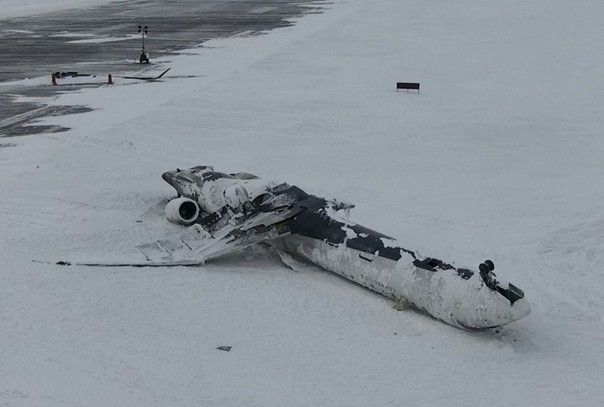
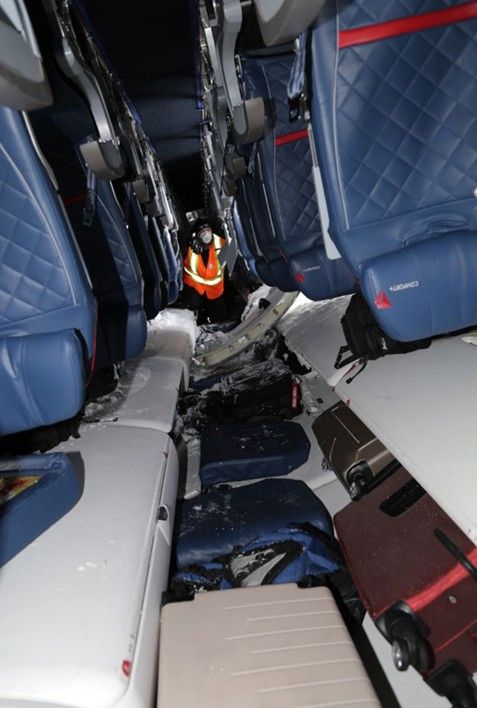
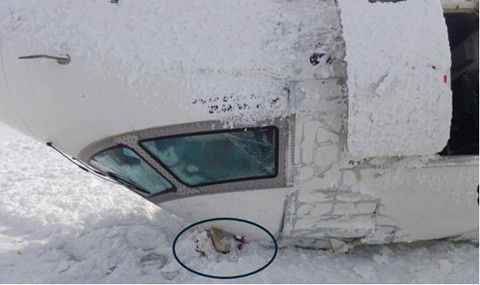
London's Heathrow Airport closes after fire causes power outage, disrupts travel
By BRIAN MELLEY, DANICA KIRKA and JILL LAWLESS Associated Press
LONDON —
A large fire near London's Heathrow Airport knocked out power Friday to Europe’s busiest flight hub, forcing it to shut all day and disrupting global travel for hundreds of thousands of passengers.
At least 1,350 flights to and from Heathrow were affected, flight tracking service FlightRadar 24 said, and the impact was likely to last several days as passengers try to reschedule their travel and airlines work to get planes and crew to the right places.
Authorities do not know what caused the fire but so far found have no evidence it was suspicious.
Residents in west London described hearing a large explosion, followed by a fireball and clouds of smoke, when the blaze ripped through the electrical substation near the airport.
Some 120 flights were in the air when the closure was announced, with some turned around and others diverted to Gatwick Airport outside London, Charles de Gaulle Airport near Paris or Ireland’s Shannon Airport, tracking services showed.
Lawrence Hayes was three-quarters of the way to London from New York when Virgin Atlantic announced they were being diverted to Glasgow.
“It was a red-eye flight and I’d already had a full day, so I don’t even know how long I’ve been up for,” Hayes told the BBC as he was getting off the plane in Scotland. "Luckily I managed to get hold of my wife and she’s kindly booked me a train ticket to get back to Euston, but it’s going to be an incredibly long day.”
Heathrow is one of the world’s busiest airports for international travel. It had its busiest January on record earlier this year, with more than 6.3 million passengers, up more than 5% from the same period last year.
Still, the disruption Friday fell short of the one caused by the 2010 eruption of Iceland’s Eyjafjallajokull volcano, which spewed clouds of ash into the atmosphere and created trans-Atlantic air travel chaos for months.
Fire under control but impact to last days
It was too early to determine what sparked the huge blaze about 2 miles from the airport, but there’s “no suggestion” of foul play, Energy Secretary Ed Miliband said.
Still, the Metropolitan Police force said counterterrorism detectives are leading the investigation into the cause because of the location of the electrical substation fire and its impact on critical national infrastructure. The force said counterterrorism command has “specialist resources and capabilities” that can help find the cause quickly.
They are working with the London Fire Brigade.
Miliband said the fire, which took seven hours to control, also knocked out a backup power supply to the airport. Heathrow said in a statement that it had no choice but to close the airport for the day.
“We expect significant disruption over the coming days, and passengers should not travel to the airport under any circumstances until the airport reopens," the airport said.
Heathrow was at the heart of a shorter disruption in 2023 when Britain’s air traffic control system was hit by a breakdown that slowed takeoffs and landings across the U.K. on one of the busiest travel days of the year.
Anita Mendiratta, an aviation consultant, said the impact of the closure will be felt over two to four days as airlines, cargo carriers, and crews are moved into position and passengers rebooked.
“As soon as the airport opens up at midnight tonight, it’s not only about resuming with tomorrow’s flights, it’s the backlog and the implications that have taken place,” Mendiratta said. “Crew and aircraft, many are not where they’re supposed to be right now. So the recalculation of this is going to be intense.”
Diverted, canceled and in limbo
At Heathrow, a family of five traveling to Dallas showed up in the hopes their flight home — still listed as delayed — would take off.
But when Andrea Sri brought her brother, sister-in-law and their three children to the airport, they were told by police that there would be no flight.
“It was a waste of time. Very confusing,” said Sri, who lives in London. “We tried to get in touch with British Airways, but they don’t open their telephone line until 8 a.m.”
Travelers who were diverted to other cities found themselves trying to book travel onward to London. Qantas airlines sent flights from Singapore and Perth, Australia, to Paris, where it said it would bus people to London, a process likely to also include a train shuttle beneath the English Channel.
Budget airline Ryanair, which doesn't operate out of Heathrow, said it added eight “rescue flights” between Dublin and Stansted, another London airport, to transport stranded passengers Friday and Saturday.
National Rail canceled all trains to and from the airport.
Flights normally begin landing and taking off at Heathrow at 6 a.m. due to nighttime flying restrictions. But the skies were silent Friday morning.
“Living near Heathrow is noisy, there are planes every 90 seconds or so, plus the constant hum of traffic, but you get used to it, to the point of no longer noticing,” said James Henderson, who has lived next to the airport for more than 20 years. “Today is different, you can hear the birds singing.”
Blaze lit up the sky and darkened homes
Matthew Muirhead was working Thursday night near Heathrow when he stepped outside with a colleague and noticed smoke rising from an electrical substation and heard sirens crying out.
“We saw a bright flash of white, and all the lights in town went out,” he said.
The London Fire Brigade sent 10 engines and around 70 firefighters to control the blaze and about 150 people were evacuated from their homes near the power station.
“This was a very visible and significant incident, and our firefighters worked tirelessly in challenging conditions to bring the fire under control as swiftly as possible,” Assistant Commissioner Pat Goulbourne said.
Scottish and Southern Electricity Networks said in a post on X the power outage affected more than 16,300 homes.
The U.K. government earlier this year approved building a third runway at the airport to boost the economy and connectivity to the world.
Associated Press writers Stefanie Dazio in Berlin and Yirmiyan Arthur in Kohima, India, contributed.
https://www.wtae.com/article/london-fire-power-outage-heathrow-shutdown/64248323
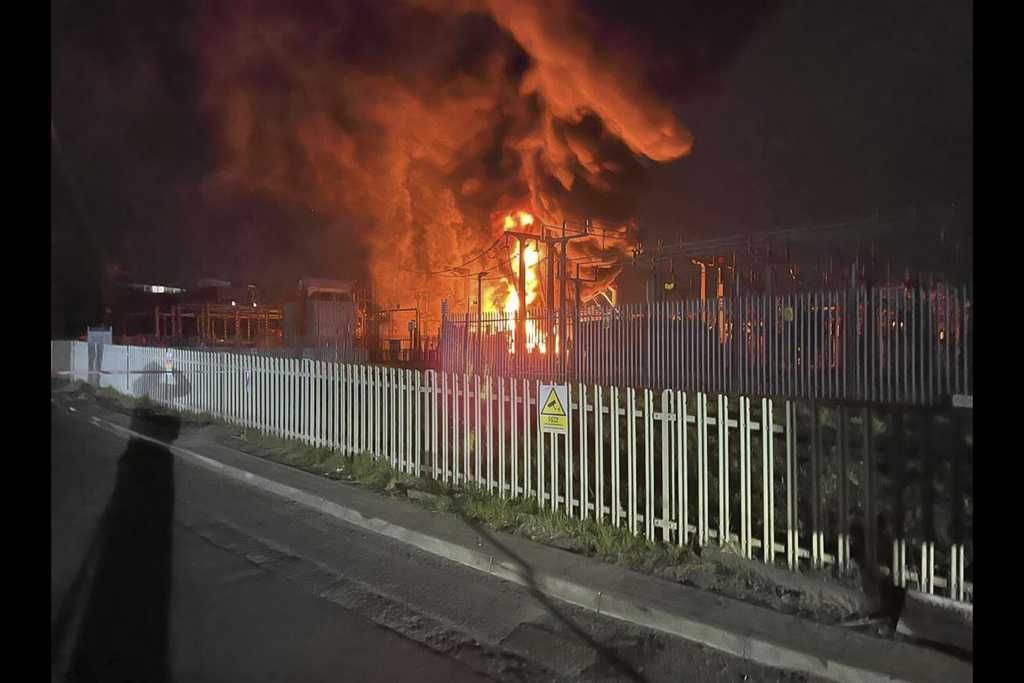
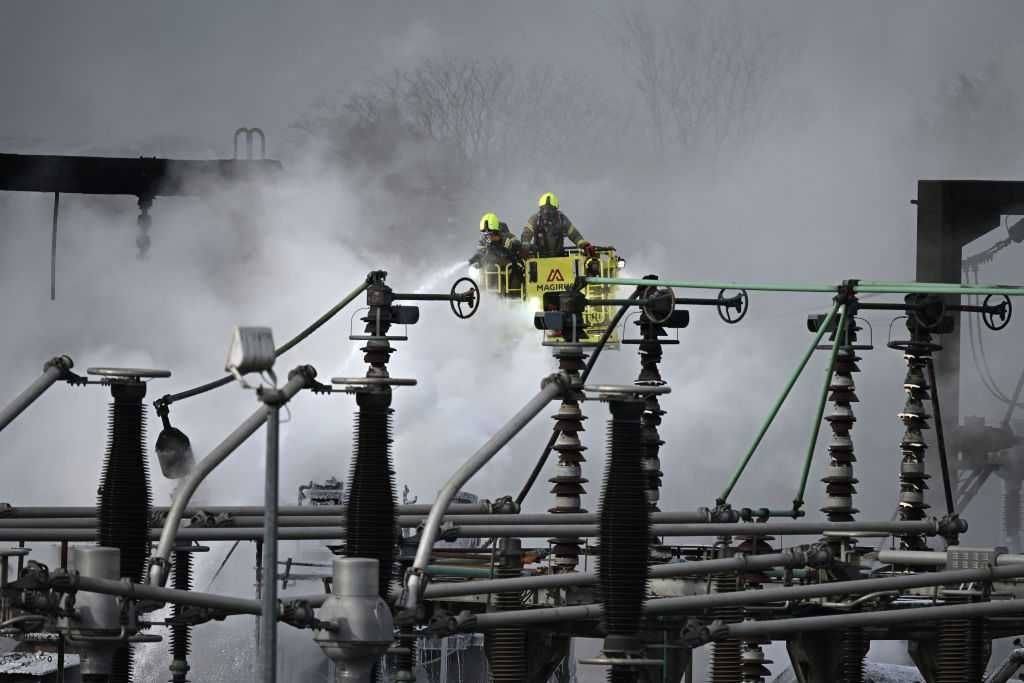
Two people dead in LaFayette plane crash
Grace James
UPDATE: The National Transportation Safety Board is expected to arrive at the scene Friday to investigate the Cirrus SR22 plane that crashed at the Barwick LaFayette Airport Thursday.
The NTSB says the small plane crashed while attempting to land, and a post-crash fire followed.
The NTSB released the following statement to Local 3:
"Once on site, the investigator will begin the process of documenting the scene and examining the aircraft. The aircraft will then be recovered to a secure facility for further evaluation. "
PREVIOUS STORY: A FAA spokesperson released the following statement regarding the deadly Cirrus SR22 small plane crash in LaFayette:
"A Cirrus SR22 crashed while landing at Barwick–LaFayette Airport in Georgia around 2:30 pm local time on Thursday, March 20. We do not yet know how many people were on board. The FAA and National Transportation Safety Board will investigate. The NTSB will be in charge of the investigation and will provide further updates."
Stacey Meeks with the City of LaFayette tells our newsroom that a witness saw the plane descending at an "abnormal trajectory" before it crashed. The nose of the plane was upward and the tail was below the nose, according to the witness.
PREVIOUS STORY: Two people are dead following a small plane crash that burst into flames at the Barwick LaFayette Airport in Walker County Thursday afternoon.
Stacey Meeks with the City of LaFayette tells our newsroom that only two people were on a private plane.
The airport is shut down now, Meeks says.
NTSB & FAA investigations are underway.
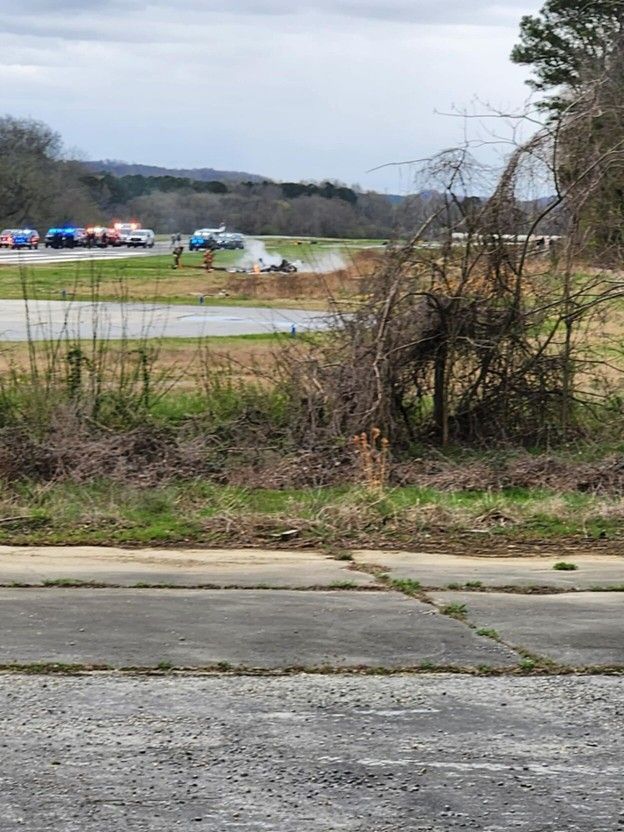
Southwest flight lands safely after laptop battery fire scare in Reno
by Kenneth Dunn
A Southwest Airlines flight from Las Vegas to Reno experienced a minor incident upon arrival Wednesday night when a laptop battery reportedly caught fire, authorities said.
Southwest Flight 3077 landed around 10 p.m. on March 19 without incident, and all passengers were deplaned safely.
The fire department and REMSA responded to the scene. Officials confirmed that no one was injured in the fire.
https://mynews4.com/news/local/southwest-flight-lands-safely-in-reno-after-laptop-battery-fire-scare
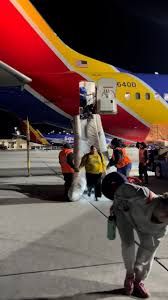
Helicopter Crashes Near Auld Road, French Valley Airport
The helicopter, described as a gyroplane, sustained major damage, firefighters say.
Ashley Ludwig, Patch Staff
FRENCH VALLEY, CA — A small helicopter carrying only the pilot went down in Murrieta, near the French Valley Airport, at Auld and Briggs roads Thursday afternoon, authorities say.
Just after 1 p.m., a Cavalon gyroplane crashed in a field near French Valley Airport in Murrieta, according to Federal Aviation Administration spokesman Donnell Evans.
Cal Fire/Riverside County Fire Department responded to the crash scene, spokesperson Jasmine Wood told Patch.
Medics assessed the pilot, who declined treatment and refused a trip to the hospital, she said.
Crews remained at the scene to mitigate a small fuel leak from the aircraft and would stay in the area until after 5 p.m. According to Evans, the cause of the crash was under investigation by the FAA.
The FAA registry shows that the gyroplane, built in 2023, was under pending registration by Gyro-Ventures out of Peoria, Arizona. No other information was immediately available.
https://patch.com/california/murrieta/helicopter-crashes-near-auld-road-french-valley-airport

Southwest plane tries to take off on taxiway instead of runway at Orlando airport
By WESH 2 staff
ORLANDO, Fla. —
The FAA is investigating after a potentially dangerous departure at Orlando International Airport on Thursday.
It happened when a Southwest Airlines Boeing 737 flight tried taking off on a taxiway instead of a runway.
Southwest said Flight 3278 stopped safely on a taxiway at Orlando International Airport after the crew "mistook the surface for the nearby runway."
When the plane started to accelerate on the parallel taxiway instead of the runway, an air traffic controller canceled the takeoff clearance.
No injuries were reported.
"Southwest is engaged with the NTSB and FAA to understand the circumstances of the event," a spokesperson for the airline said.
The flight was bound for Albany, New York.
Southwest said in a statement that safety is its top priority and it will investigate.
The National Transportation Safety Board is also involved in the investigation.
https://www.wtae.com/article/southwest-taxiway-incident-orlando/64252248
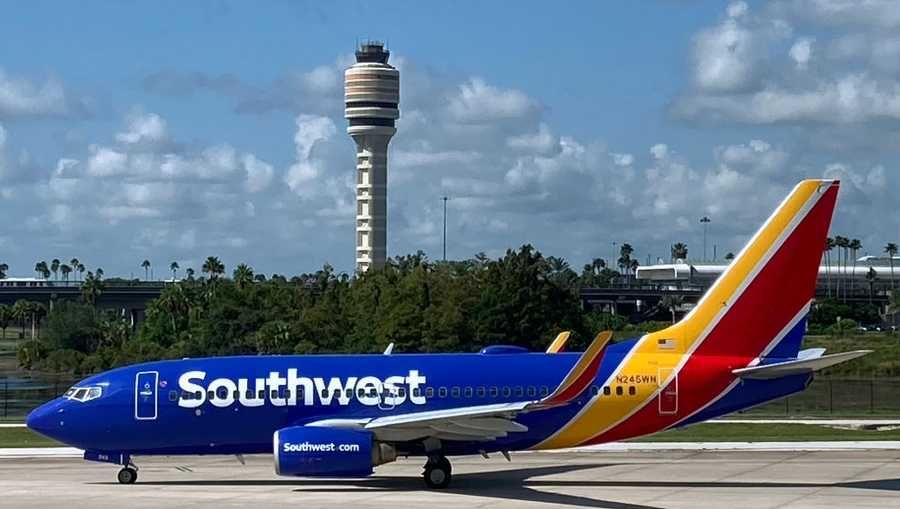
NTSB Final Report: Heath V-Strut
Pilot’s Failure To Maintain Adequate Airspeed And His Exceedance Of The Airplane’s Critical Angle Of Attack
Location: Oshkosh, Wisconsin Accident Number: CEN23FA320
Date & Time: July 25, 2023, 07:33 Local Registration: N9549
Aircraft: Heath V-Strut Aircraft Damage: Substantial
Defining Event: Loss of control in flight Injuries: 1 Minor
Flight Conducted Under: Part 91: General aviation - Personal
Analysis: Shortly after takeoff the pilot turned the airplane to avoid flying over the perpendicular runway. He reported that during the turn the airplane stopped climbing. The pilot aimed the airplane toward a field and attempted a forced landing. During the landing the airplane came to rest inverted, which resulted in substantial damage to the fuselage, empennage, and both wings.
One witness stated that the airplane “looked sluggish,” with the nose of the airplane high. Several witnesses observed the left wing dip before the airplane descended below the tree line. Security video showed the left wing dropped and the airplane impacted the ground in a leftwing-low attitude.
A postaccident examination of the engine, flight controls, and related systems revealed no mechanical failures or malfunctions that would have precluded normal operations. The splintered damage to the propeller blade was consistent with power and rotation at the time of impact. The pilot also reported that there was nothing mechanically wrong with the airplane at the time of the accident.
Weather conditions at the time of the accident were conducive for serious icing at glide power. However, investigators were not able to determine if a partial loss of engine power due to the accumulation of carburetor icing during the ground taxi may have resulted in the loss of climb performance after takeoff. Given the witness description and the footage captured by the security camera, it is likely that the pilot failed to maintain adequate airspeed during the initial climb and turn, which resulted in the exceedance of the airplane’s critical angle of attack and an aerodynamic stall and a subsequent loss of control.
Probable Cause and Findings: The National Transportation Safety Board determines the probable cause(s) of this accident to be -- The pilot’s failure to maintain adequate airspeed and his exceedance of the airplane’s critical angle of attack, which resulted in an aerodynamic stall.
FMI: www.ntsb.gov

Today in History
3 Years ago today: On 21 March 2022 China Eastern Airlines flight 5735, a Boeing 737-800, crashed in a mountainous area 20 km southwest of Wuzhou, Tengxian County, China, killing all 132 on board.
Date: Monday 21 March 2022
Time: 06:22
Type: Boeing 737-89P (WL)
Owner/operator: China Eastern Airlines
Registration: B-1791
MSN: 41474/5453
Year of manufacture: 2015
Engine model: CFMI CFM56-7B26E
Fatalities: Fatalities: 132 / Occupants: 132
Other fatalities: 0
Aircraft damage: Destroyed, written off
Category: Accident
Location: 20 km SW of Wuzhou, Tengxian County - China
Phase: En route
Nature: Passenger - Scheduled
Departure airport: Kunming Changshui International Airport (KMG/ZPPP)
Destination airport: Guangzhou Baiyun International Airport (CAN/ZGGG)
Investigating agency: CAAC
Confidence Rating: Information verified through data from accident investigation authorities
Narrative:
China Eastern Airlines flight 5735, a Boeing 737-800, crashed in a mountainous area 20 km southwest of Wuzhou, Tengxian County, China, killing all 132 on board.
The aircraft departed Kunming Changshui International Airport at 13:15 (05:15 UTC) on a domestic passenger service to Guangzhou Baiyun International Airport.
The aircraft was cruising
ADS-B flight tracking data from Flightradar24 shows the aircraft at 29,100 feet, flying along Airway 599 towards Guangzhou. ADS-B data released by Flightradar24 suggest the descent started between 06:20:43 and 06:20:59. Altitude datapoint show the descent stopped about 06:22:00 around 7400 feet and the aircraft climbed to about 8600 feet before the aircraft again entered a steep descent. The last recorded datapoint was at 06:22:35 at 3225 feet. CCTV footage and dashcam appears to show the aircraft in an extremely steep descent before it crashed in a wooded mountainous area.
The location where the descent from 29100 feet was initiated, coincides with the point where flight MU5735 began its descent (also from 29100 feet), the day before the accident.

